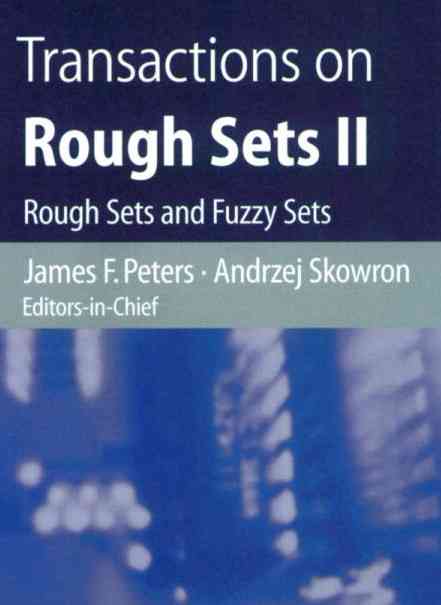
A modern musical counterpart to baroque music’s deployment of grounds can be found in teh improvisational qualities of jazz. Jazz riffs, themselves models of repetition with variation, frequently make reference or pay homage to base canonical works ... a benign form of appropriation.”
— Julie Sanders, Adaptation and Appropriation, p. 40.
M ost complicating of all is the problem of discerning the actual intentions ... intentions that were as often obscured as revealed in the texts ... Voltaire fixed his residence near the French border so that he could escape capture and imprisonment if any of his works proved too offensive to the French government ... Enlightened esotericism entailed explicitly stating ‘acceptable’ positions that were then undermined by adducing arguments that surreptitiously implied variant, often contrary, conclusions. As a result, any attempt to limn the politics of The Enlightenment encounters difficulties precisely because the line between sincerity and obfuscation was, by intention, difficult to mark.”Tonight’s NewMusicNow program series at Boston’s new Institute of Contemporary Art has John Zorn and his ensemble performing pieces from the Masada series, starting with Silvie Couvoisier (piano) and Mark Feldman (violin). The evening concludes with Masada Book of Angels, where John Zorn (alto sax) is joined by Greg Cohen (bass) and Ken Wollesen (drums).
— Darren Staloff, The Politics of Enlightenment and the American Founding, p. 290.
Zorn has created a prolific body of work that draws on a variety of genres including jazz, classical, rock, punk, klezmer, film, cartoon, and other ‘pop’ music, and defies traditional academic categories. A native of New York City, he has been a ‘character’ in the Manhattan scene since 1975, incorporating a wide range of musicians in various orchestrations/ensembles. Some of Zorn’s inspirations nominally include Ives, Varèse, Cage, Carter, Partch; Berg, Stravinsky, Boulez, and Kagel, although he also acknowledges soundtrack composers Herrmann, Morricone and Stalling. His writing is what could fairly be said to be ‘transtextual’.
As such, it’s music that’s inherently difficult to classify, precisely because it is difficult to know the intentions that underly the work, and the transtextuality may in fact obfuscate those intentions.
F ormal organisation ... rhetorical structure ... and thematic content: genres are always complex structures which must be defined in terms of all three of these dimensions. The thematic content of a genre can be thought of as the shaped human experience that a genre invests with significance and interest. In formal terms, this shaping is expressed as a set of topoi, recurrent topics of discourse, or as recurrent forms of argumentation. In music we might say that it is expressed as the emotional tone characteristically carried by the musical forms [that are members of the genre at hand]: quietly meditative in the nocturne or the evening raga; plaintive in the ballad; triumphant in the march; drivingly energetic in techno.”
— John Frow, Genre, p. 75.

Transtextuality is Gerard Genette’s term for all of the relationships between texts. Genette identifies five relational subcategories: inter-, hyper-, para-, meta-, and archi-texts.
- Intertextuality: direct presence of one text in another through allusion, quotation, plagiarism.
- Hypertextuality: the relation between a text and a preceding ‘hypotext’, a text or genre on which it is based and refers to but which it transforms, modifies, elaborates or extends (including parody, spoof, sequel, translation).
- Paratextuality: the relation between a text and that which surrounds the main body of the text, such as titles, headings, illustrations, covers, etc.
- Metatextuality: explicit or implicit critical commentary of one text on another text.
- Architextuality: formal designation of a text as part of a genre or genres.
var(X + Y) = E( X + Y - E(X + Y) )2 = var(X) + var(Y) + 2E((X - µX)(Y - µY)).
The last term is called the covariance and, if the two variables are completely statistically independent and the sum is merely a comingling (in our case, of genres), then the (linear) association will be nil and cov(X,Y) will be zero. In such a case var(X + Y) = var(X) + var(Y). Codings of pieces that are members of genre X (in MusicXML or other MIR format) have a distinctive variance, as do codings of exemplars of genre Y.

So it’s possible for some bi-genral mixtures (segments of pieces, encoded) to ascertain by programmatic/algorithmic inspection what genres they are likely comprised of. This has been done for more than 20 years, for example, in signal-processing software used in rights management and broadcast royalty compliance, for ASCAP and other agencies. IRCAM has maintained a special interest group (SIG) working on this for many years as well. [Bi-genral “two-at-a-time” deconvolution: tractable, with current technology. It’s still difficult, however, to algorithmically classify and accurately decompose works that are composites of three or more genres, even with long samples. Cryptomusicology! Intentional obfuscation! ]
Incidentally, Bozena Kostek, Piotr Szczuko, Pawel Zwan, and Piotr Dalka have an excellent paper in the Transactions on Rough Sets, Vol. 3, edited by James Peters, Andrzei Skowron, and Dick van Albada (pp. 112-34), just published this year. Classification of musical styles based on a training/calibration set of 162 exemplars was presented, with neural network classifier algorithms compared against a rough-set algorithm RSES—both yielding about 80% classification accuracy for pieces subsequently submitted to the classifier algorithms. The Kostek-Szczuko-Zwan-Dalka paper (and book) may be useful for those of you who are interested in Zorn, Zorn’s compositions and compositional methods, and MIR in general.

The mathematics of ‘rough sets’ (see links below) is very promising, for MIR and quantitative analysis of compositional methodological similarities.

If you’re in Boston tonight and are feeling transtextual, come to the ICA and give Zorn and his collaborators a listen. It’s a sunny 20 °C April day here, and it should be a beautiful evening down at the harbor.

O ne whose merit surpasses his iniquity is a ‘tzadik’.”
— Maimonides, Tractate Yevamot of the Babylonian Talmud, 49b-50a.
- Aitken P. Genre Trouble: Locating John Zorn’s Painkiller, a Transtextual Approach. 2004.
- Zorn page at John D and Catherine T. MacArthur Foundation
- New Music Now programs, at Boston Institute of Contemporary Art (ICA)
- Tzadik.com
- Allen G. Intertextuality. Routledge, 2000.
- Bar Kohkba Sextet. Lucifer: Book of Angels, Vol. 10. (Tzadik, 2008.)
- Berghammer R, Moller B, Struth G, eds. Relations and Kleene Algebra in Computer Science. (Proceedings of RelMiCS 2008, and the 5th International Conference on Applications of Kleene Algebras, AKA 2008.) Springer, 2008.
- Bustince H, Herrera F, Montero J, eds. Fuzzy Sets and Their Extensions: Representation, Aggregation and Models. Springer, 2007.
- Dennett D. The Intentional Stance. MIT, 1989.
- Frow J. Genre. Routledge, 2005.
- Genette G. Paratexts: Thresholds of Interpretation. Univ California, 1997.
- Genette G. The Architext: An Introduction. Univ California, 1992.
- Genette G. Palimpsests: Literature in the Second Degree. Univ Nebraska, 1997.
- Gorbunov V. Algebraic Theory of Quasivarieties. Springer, 1998.
- Hatten R. The place of intertextuality in music studies. Am J Semiotics 1985; 3:69-82.
- Hutcheon L. A Theory of Adaptation. Routledge, 2006.
- Maimon O, Rokach L. Decomposition Methodology For Knowledge Discovery And Data Mining: Theory And Applications. World Scientific, 2005.
- Orr M. Intertextuality. Polity, 2003.
- Pal S, Skowron A, eds. Rough Fuzzy Hybridization: A New Trend in Decision-Making. Springer, 1999.
- Peters J, Skowron A, van Albada D, eds. Transactions on Rough Sets III. Springer, 2008.
- Peters J, Skowron A, Dubois D, Grzymala-Busse J, Inuiguchi M, Polkowski L, eds. Transactions on Rough Sets II: Rough Sets and Fuzzy Sets. Springer, 2005.
- Sanders J. Adaptation and Appropriation. Routledge, 2005.
- Sloboda J, ed. Generative Processes in Music: The Psychology of Music, Improvisation, and Performance. Oxford Univ, 1988.
- Staloff D. The Politics of Enlightenment and the American Founding. Hill & Wang, 2005.
- Worton M, Still J, eds. Intertextuality: Theories and Practices. Manchester Univ, 1990.
- Zorn J, ed. Arcana II: Musicians on Music. Granary, 2008.
- Zorn J, ed. Arcana: Musicians on Music. Granary, 2000.
- Zorn J. Dreamers. (Tzadik, 2008.)

No comments:
Post a Comment